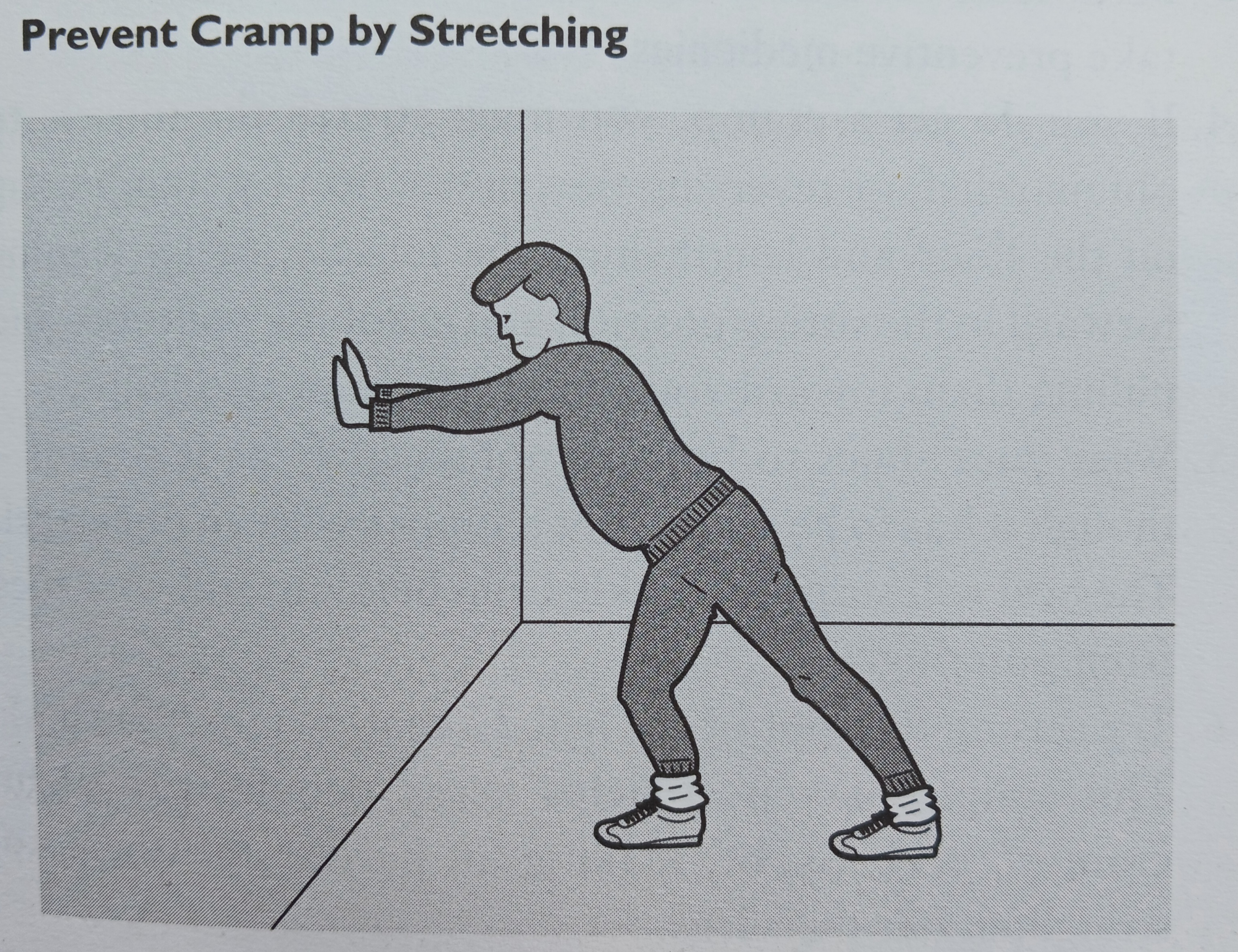On Nocturnal Leg Cramps
summarized from Sleep: The Complete Guide to Sleep Disorders and a Better Night’s Sleep by J. Paul Caldwell, MD
In her dream, Agnes...was standing with her back to the living-room fire place, warming herself in the cheerful heat of the blaze the crackled behind her. She could feel the tingle on the back of her legs, as if the fire itself were dancing lightly on her skin.
Suddenly, in the dream, the heat of the fire was no longer pleasant...She could feel a burning pain, beginning in her leg. She tried to pull away, but couldn't. Her leg was paralyzed and the awful pain increased scorching into her dream. She couldn't move, though the burning became worse and worse.
When Agnes awoke from her dream of childhood, the severe pain that she felt in the back of her leg was a nocturnal muscle cramp. A cramp is simply a painful, prolonged, and unwanted contraction of muscle.
Cramping in the legs at night is one of the most common causes of disturbed sleep, especially among older people.
This cause [of disturbed sleep] is common among seniors. As we age, the ligaments in the foot and ankle weaken, the arches fall, and the anatomy of the foot changes, with the result that the dynamics of weight-bearing alter dramatically. This often means that more strain is put on the muscles of the calf ( because they're now pulling at a different angle), and the muscles become more likely to cramp. Proper attention to the dynamics of weight-bearing in the foot, by the use of such things as custom-made supports worn inside your shoes (called "orthotics") will often decrease the irritability of the muscles, and thus decrease, or stop, nighttime cramping.
Wearing proper shoes during the day can decrease the strain on these muscles and prevent night time cramping...[and] running shoes offer by far the best support, cushioning, and alignment. Wearing running shoes all day may very well help you sleep better at night.
[M]ost patients with leg cramps at night have no demonstrable chemical abnormality or underlying disease.
Tips for Sleepers with Leg Cramps
1. The most common cause of leg cramping at night is a physical tendency of the muscles to shorten. Try to stretch the affected area before retiring. The best single exercise to stretch the calf muscles consists of standing about a meter (3 feet) from a wall and then leaning forward to touch the wall with your hands, leaving your heels flat on the floor. You can feel the muscles stretch. Massage and heat also help, as do simple rhythmic exercise routines before bed.
2. Try not to point your toes while lying flat in bed. This sounds silly, but anything that causes you to point your toe predisposes you to have leg cramps. Heavy bedclothes tightly tucked in, sleeping on your stomach, stretching out in bed while turning — all set the stage for severe contraction of the calf muscles. Untuck and lift out the covers at the foot of the bed, or use some kind of cradle at your feet to keep the covers off them, preventing the weight of the covers from pushing your toes down. Turning from side to side means extending the ankle, so do this carefully. If you must sleep on your stomach, allow your toes to hang over the edge of the bed so the ankle is maintained at a right angle.
3. Try putting a pillow at the foot of the bed beneath the sheets. This will essentially shorten your bed and prevent you from stretching your legs out fully. This simple expedient works for many people, especially pregnant women, in whom leg cramps at night are very common and who, because of the risk to their unborn infant, are unable to take preventative medicines.
4. If you do get a cramp, you must stretch the muscle to obtain relief, or reversing the contraction by standing up on the floor and lengthening the muscle, or by leaning forward in the sitting position and grabbing your toes and pulling them toward your knee. Massage also helps.
5. Wear your shoes to bed. It’s not as crazy as it sounds — though it has to be a shoe, not a slipper with an open heel. The heel will stop your ankle from bending and your toes from pointing.
6. Try raising the foot of the bed 22 centimeters (9 inches). This simple maneuver helps many people with night cramps, perhaps making it harder for them to stretch out their legs.
7. Examine your feet, looking for structural imbalances that could cause excessive or improper strain on your calf muscles or the small muscles of your feet. Many people can prevent nocturnal cramping by purchasing shoes with adequate support, or orthotics to correct architectural defects in their feet, and relieve chronic strain on the calf muscles. Invest in a pair of good running shoes, even if you hate jogging or can barely walk.
8. Use a magnet. Many people obtain relief from nocturnal leg cramping by simply placing an ordinary 7 to 15 centimeter (3 to 6 inch) magnet under the sheet. Though no documented study has been done on the efficiency of magnets, many physicians have reported that their patients have found relief using magnets.
9. Many drugs can cause cramping, including nefedipine, lithium, salbutamol, diuretics, cimetidine, and ranitidine. Leg cramps are also sometimes caused by biochemical abnormalities such as low calcium or low sodium. Although these cases are extremely rare, if your leg cramps are not easily corrected, see your doctor.
10. If all else fails, you may want to try medicines to treat your cramping. Quinine sulphate is commonly prescribed for cramping; its chemical properties relax muscles and relieve pain, and also make the muscles less excitable. It works for about fifty percent of those with leg cramps, and most patients have either an excellent response (almost total control of cramping) or none at all, usually within a week, and certainly within two weeks. The usual dose is 300 milligrams at night, 200 milligrams for seniors (like many medicines, quinine may be metabolized and eliminated more slowly in seniors). Pregnant women must not take it, and it does have side effects, including buzzing in the ears, headaches nausea and blurred vision. Quinine often reacts with other medicines such as digitalis preparations, anticoagulants and anticonvulsants, and you must take it every single night, since you don’t know when the cramping will occur. Check with your doctor.
Clonazepam, a diazepam derivative, may be useful for nocturnal leg cramps. The dose is 0.5 milligrams to 1 milligram at night, though it might cause sedation the next day.


